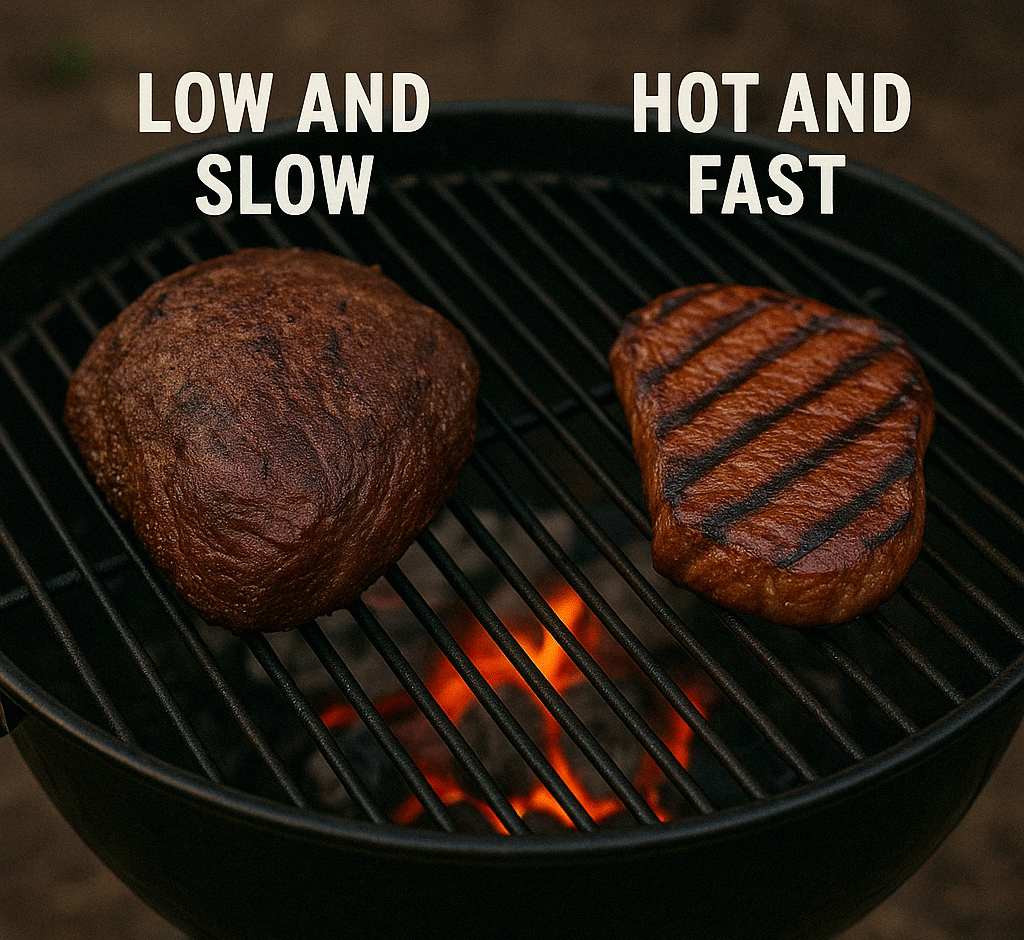
Not sure when to go low and slow or hot and fast? This guide breaks down each method, when to use them, and how to get the best results from your grill.
Two Heat Zones. Two Strategies. One Goal: Killer BBQ.
Ask any seasoned griller or pitmaster and they’ll tell you: the how matters just as much as the what. You can have the best brisket on the planet, but if you hit it with the wrong heat approach, it’ll turn dry, chewy, or flat-out bland.
So how do you know whether to go low and slow or hot and fast? Let’s break it down — because once you understand the science behind heat control, you can take on any recipe with confidence.
What is Low and Slow?
Low and Slow means cooking at a low temperature (225°F–275°F) for a long time — sometimes hours. This technique breaks down connective tissue, renders fat, and infuses deep, smoky flavor.
Best for:
- Brisket
- Ribs
- Pork shoulder
- Whole chickens or turkeys
- Bone-in roasts
Why it works:
These tougher cuts are packed with collagen and fat. Cooking them low and slow gently melts that collagen into gelatin, keeping the meat juicy, tender, and rich in flavor.
Pro Tip: Keep the lid closed and the smoke flowing. Use wood chips, chunks, or a water pan to maintain moisture and control the temperature.
What is Hot and Fast?
Hot and Fast involves high temps, usually 400°F–600°F, and shorter cook times — think searing, grilling, or charring.
Best for:
- Steaks
- Burgers
- Sausages
- Chicken breasts
- Shrimp and seafood
- Veggie skewers
Why it works:
Hot and fast is all about caramelization and that beautiful Maillard reaction. It gives food a crispy crust and keeps moisture locked in — perfect for tender cuts that don’t need long cook times.
Pro Tip: Preheat your grill for at least 10–15 minutes. You want those grates ripping hot before anything hits them.
Choosing the Right Method by Cut
| Meat | Method | Why |
| Brisket | Low & Slow | Needs time to break down connective tissue |
| Ribeye | Hot & Fast | Already tender, benefits from fast sear |
| Chicken thighs | Combo | Start indirect, finish over direct heat |
| Pork ribs | Low & Slow | Gets tender, absorbs smoke over time |
| Salmon fillets | Hot & Fast | Delicate, cooks through quickly |
| Whole chicken | Low & Slow | Even cooking, retains moisture |
Bonus: The Hybrid Method
Want the best of both worlds? Reverse searing (covered in Article #3) is a hybrid method where you cook low and slow first, then finish with a sear. It’s great for thick steaks, pork chops, and more.
Another option? Two-zone cooking (see Article #2) lets you switch zones mid-cook for total control.
Final Thoughts
Low and slow is all about patience and depth. Hot and fast is about bold, charred flavor and quick results. Neither is better — they just serve different purposes. Once you know which meats respond best to each method, you’ll be grilling with purpose instead of guesswork.
